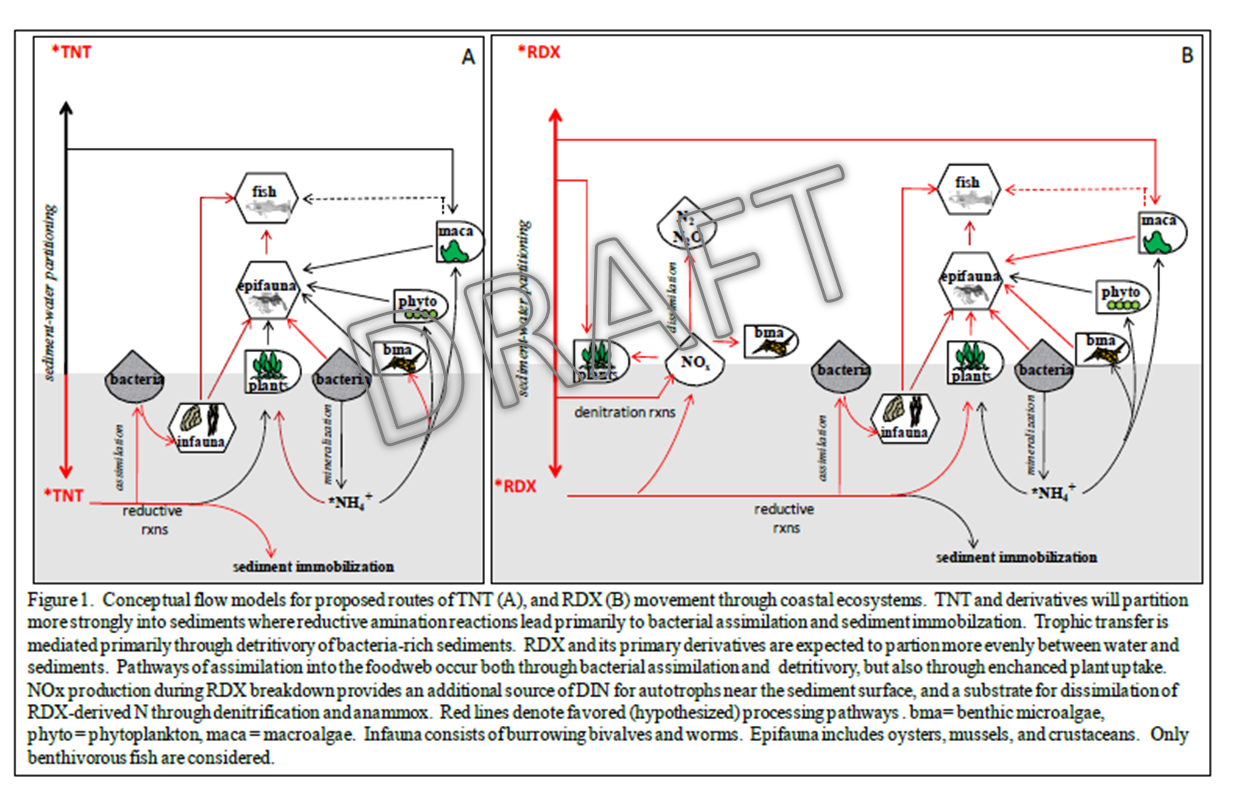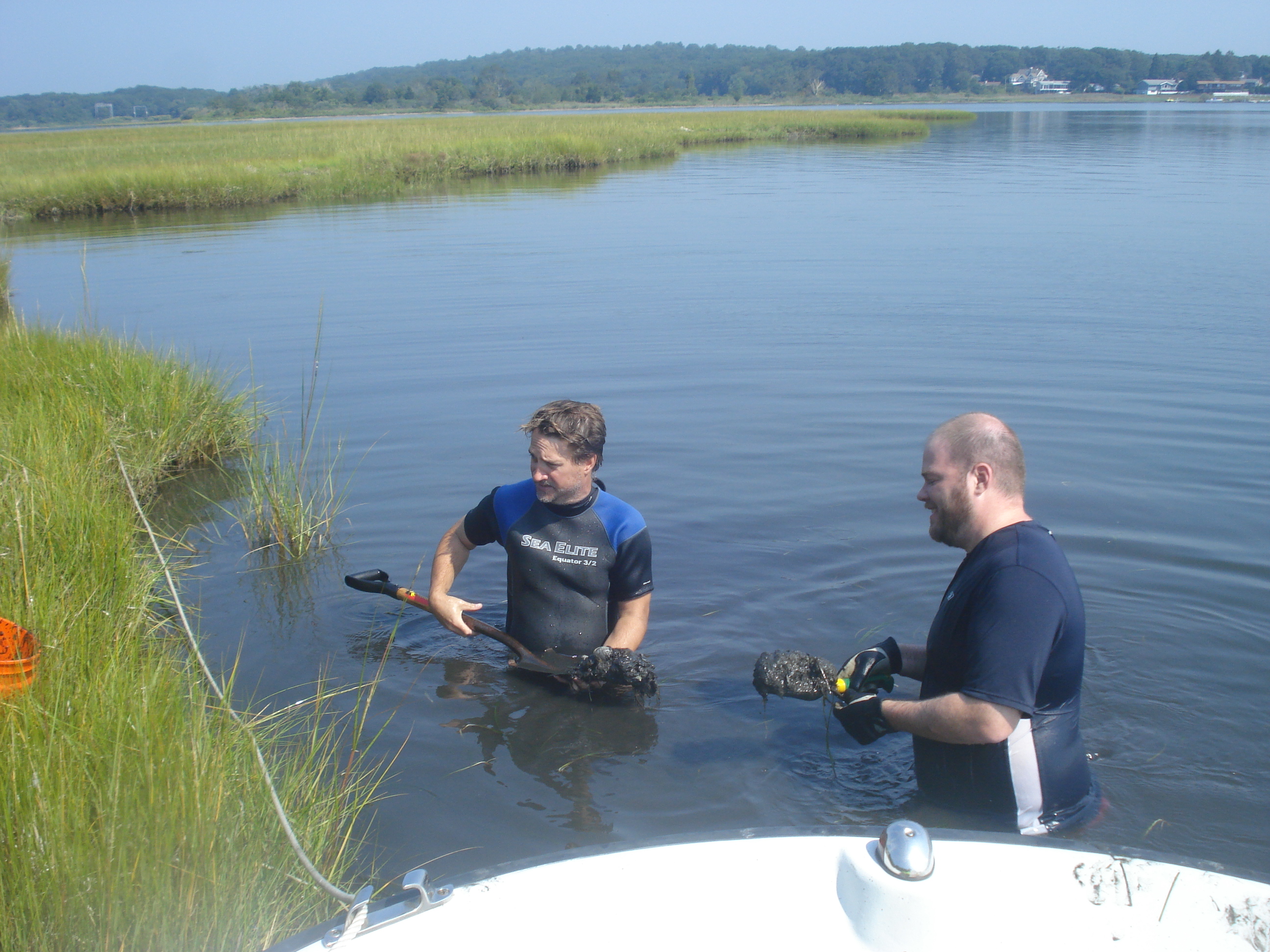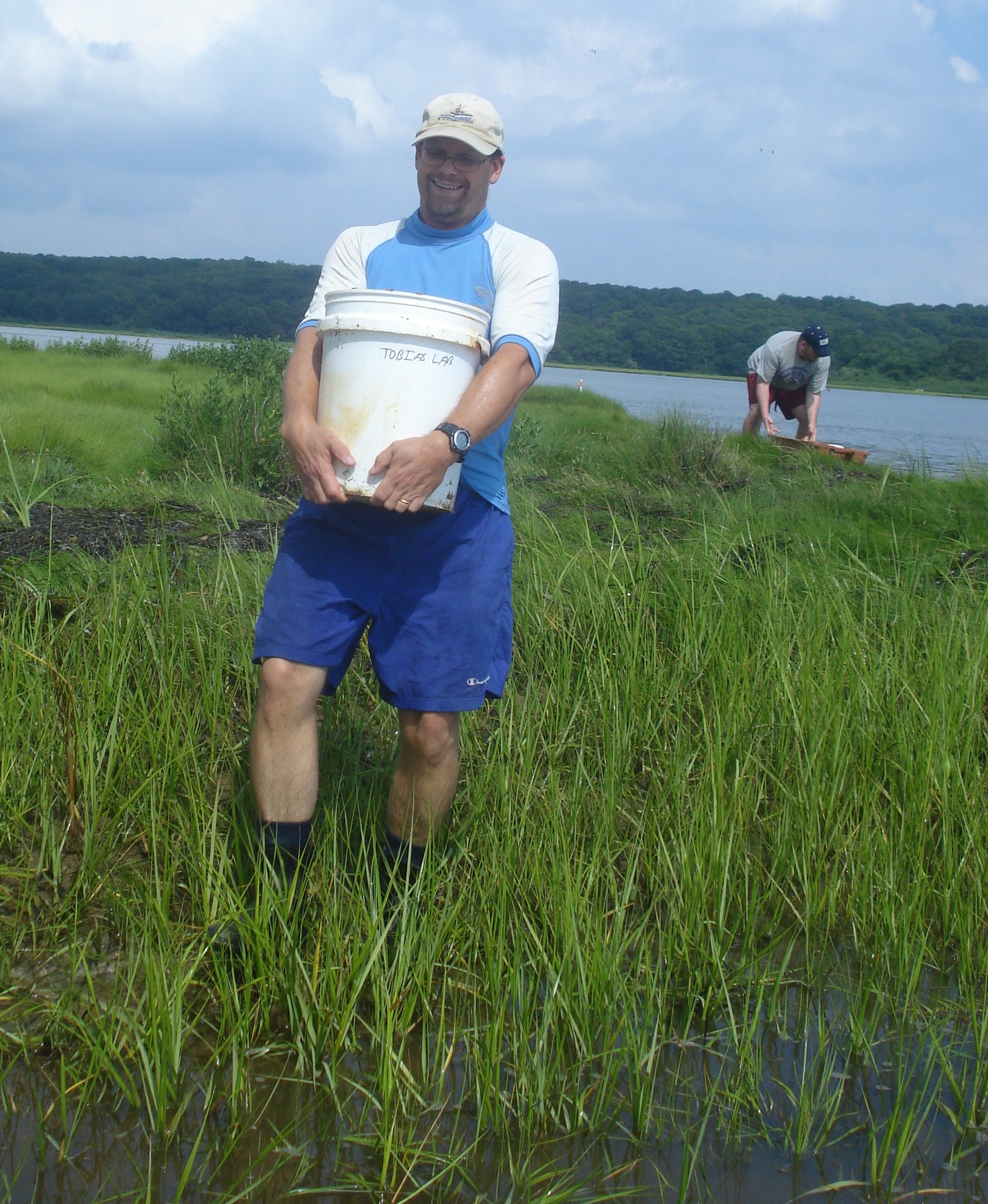Tracking the Uptake, Translocation, Cycling, and Metabolism of Munitions Compounds in Coastal Marine Ecosystems Using Stable Isotopic Tracer – Funded through DOD/ SERDP Grant
Group Project with Penny Vlahos
The explosives 2,4,6-trinitrotoluene (TNT) and hexahydro-1,3,5-trinitro-1,3,5-triazine (RDX) are common munitions constituents that have left a legacy of contamination at numerous DoD facilities. Both compounds, and/or their derivatives, are EPA priority pollutants. Both compounds are persistent in the environment. Continued use of RDX and TNT in live fire ranges indicates the likelihood that environmental exposure is ongoing. Within the contiguous 48 United States, there are approximately 41 active DoD installations located within the coastal zone. Exposure of marine/estuarine ecosystems at some sites is well documented, while other installations have a high potential for exposure but limited data on RDX or TNT concentrations in marine endmembers. Coastal habitats are highly productive, nitrogen-limited, and economically valuable ecosystems. Their response to munitions compounds, and their effect on munitions cycling, persistence, bioaccumulation, and mineralization is largely unknown. We propose to quantify the pathways and rates of RDX and TNT processing in three typical coastal ecotypes: subtidal vegetated, subtidal unvegetated, and intertidal salt marsh. Four technical objectives are proposed: 1) What are the uptake rates of these compounds at the organismal to ecosystem scales, and which ecosystem components are important regulators of processing? ; 2) What ecosystem components act as zones of storage for munitions compounds vs. those that promote metabolism?; 3) Do ecosystem characteristics (e.g. mineralization, autotrophy, redox profile, trophic structure) relate to processing or accumulation of munitions compounds?; 4) What is the ecosystem-scale residence time, or clearance rate of these compounds? We propose to use stable isotope (15N) -labeled RDXand TNT in a series of whole-ecosystem tracer experiments designed to track the uptake,translocation, cycling, accumulation, and degradation of RDX and TNT in three characteristic coastalmarine ecotypes. This novel approach, used previously for tracking inorganic nitrogen on ecosystemscales, will be applied in a sequence of ecosystem mesocosms (ecocosms) experiments and thenapplied in situ at sites subject to chronic RDX and TNT exposure. Tracking the flow of 15N from theparent compounds into bulk biotic pools and as RDX or TNT compound specific pools will distinguish between ecosystem compartments that store these compounds vs. those that promotemetabolism/mineralization. Isotope tracer modeling will be used to quantify specific uptake rates for each organismal pool, total ecosystem clearance rate, and total capacity of the system to assimilate RDX and TNT.




